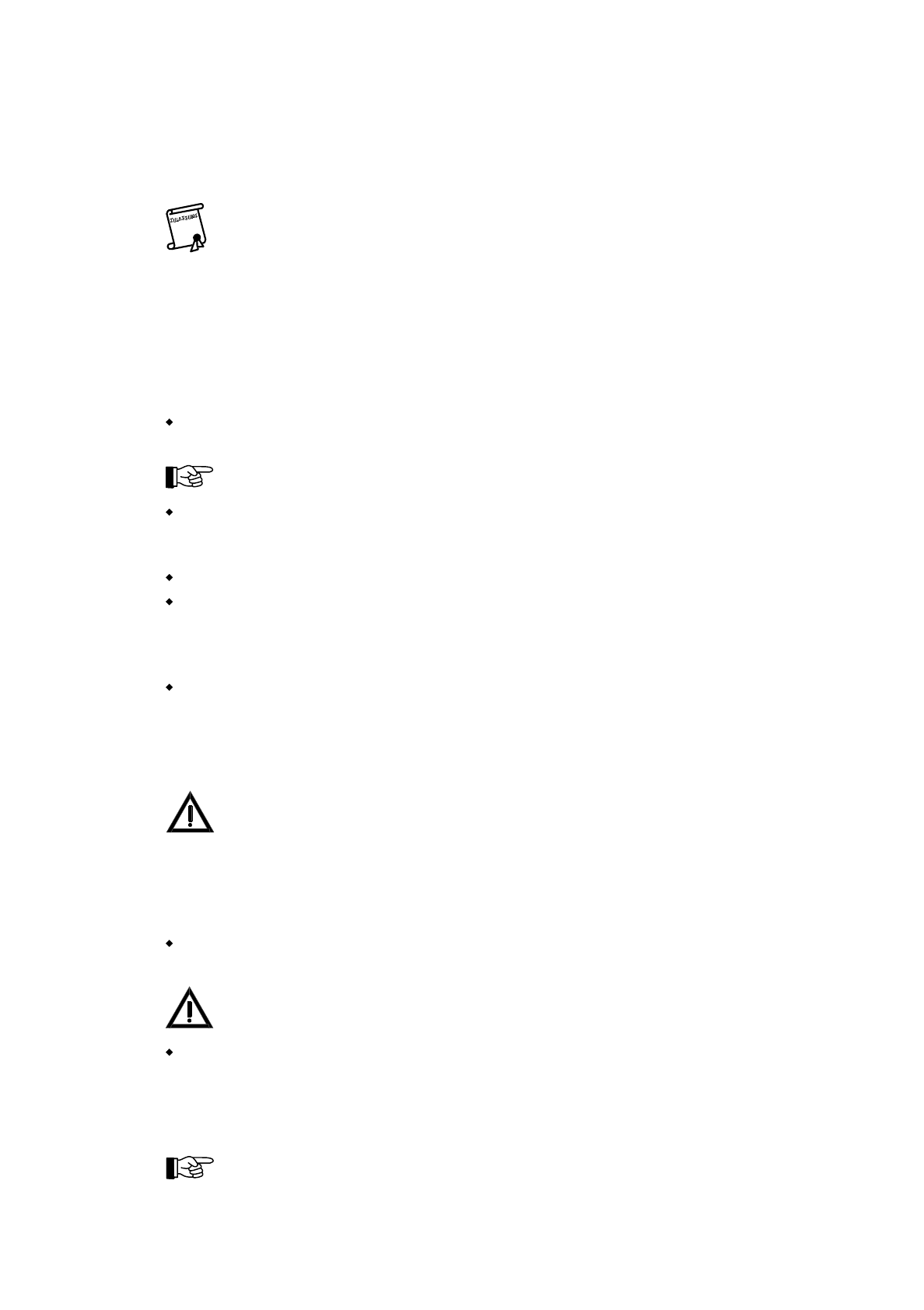
6 Ensuring the efficacy of the system by the user
In order to ensure the efficacy of the fire detection system the user periodically should make sure that
the system fulfills its determined purposes in all areas and that it functions fully and well.
This internal control may also be ordered by the regulatory agencies.
6.1 Periodic function tests
Periodic function tests have to be performed by trained personnel (e.g., by the fire prevention officer).
The function tests generally are simple tests of the operational readiness of the fire detection system, as
described exemplary in the following.
6.1.1 Testing of the fire detection control panel and the power supply devices
Make sure that the light-emitting diode 'POWER' is illuminated on the fire detection control panel
BC216-1 or on all operable BCnet sectional control panels of the network control panel BCnet216.
In normal condition of the control panel only the green light-emitting diode 'POWER' is solely
illuminated.
Make sure that no fault is currently on the control panel. You recognize the fault condition (see
from page 58 in Chapter 5.5: "Fault-message condition") by the flashing of the yellow display
'FAULT'.
Make sure that no disablements are in effect and that no detector zones are in test condition.
Carry out a display test by pressing the button 'Silence buzzer' on the control panel or on all oper-
able BCnet sectional control panels. Thereby, you are testing the optical displays and the internal
buzzer. (See from page 44 in Chapter 4.7.12.2: "Testing the optic and acoustic displays and the
buzzer - submenu point [Display test]").
In spite of the complex charging control for charging the stand-by batteries, the lifespan of the
maintenance-free batteries used in security systems is limited. Notice the specifications of the
manufacturer of the battery regarding the usable life of the stand-by batteries used in the control
panel (or in the BCnet sectional control panels). Promptly replace expired batteries during the peri-
odic maintenance of the system.
Make sure that the discarded stand-by batteries are disposed of legally. The stand-by batteries used in
fire detection systems are built on the basis of lead and sulphuric acid. Such batteries never are to be
disposed of in domestic waste!
6.1.2 Testing of detectors
Proper testing devices are available optionally for testing the functions of automatic fire detectors. The
function testing is carried out as follows:
Put the detector zone whose detectors you want to test in test condition. (See from page 63 in Chap-
ter 5.7: "Test condition").
If you carry out a detector test without putting the corresponding detector zone into test condition, you
automatically activate the fire control systems (including, if existing, extinguishing systems - danger to
life!) and the alarming devices, and unintentionally call the safety personnel (e.g., the fire brigade).
Activate the detectors that are in test condition one after the other by using the appropriate testing
device. You recognize the correct function by the light display on the detector. The alarm condition
of the detector is reset automatically after a few seconds - you do not have to reset the alarm on the
control panel (one-man-maintenance). Make sure that you are activating only detectors that are in
test condition!
In addition, you can check on the executed activation of the detectors by reading the event memory
subsequently.
HB216AE.SAM / 0130 / AN9161202
ZN5002/73/65
User Manual Series BC216 / Part A Chapter 6 • Ensuring the efficacy of the system by the user
65


















